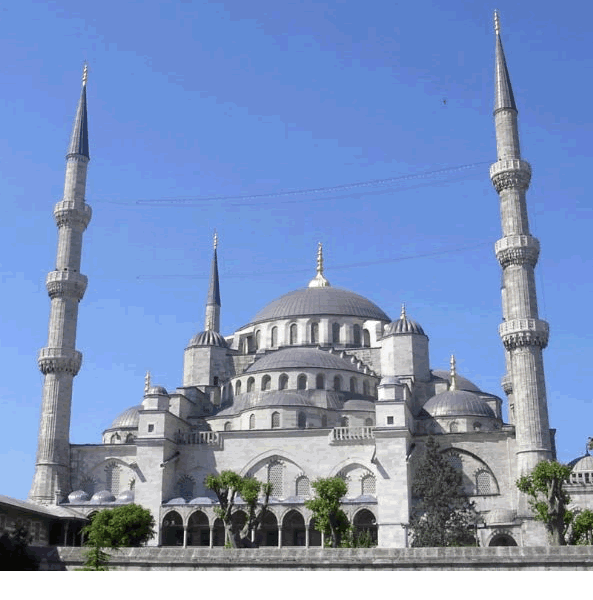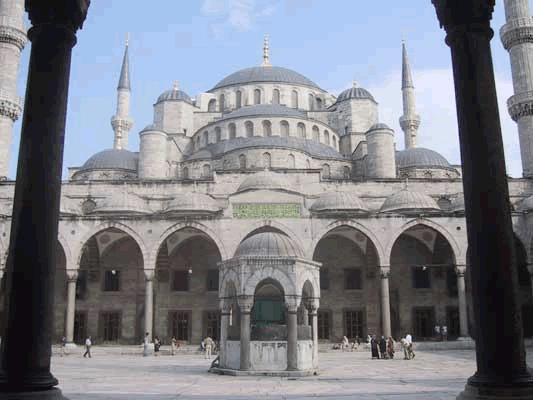 |
 |
BLUE MOSQUE - TURKEY
 |
 |
| Location: | Geographic coordinates: | Area: | Area - comparative: |
| Southeastern Europe and southwestern Asia (that portion of Turkey west of the Bosporus is geographically part of Europe), bordering the Black Sea, between Bulgaria and Georgia, and bordering the Aegean Sea and the Mediterranean Sea, between Greece and Syria. | 39 00 N, 35 00 E | total: 780,580 sq km | slightly larger than Texas |
| Population: | Languages: | Capital: | Currency: |
| 68,893,918 | Turkish (official), Kurdish, Arabic, Armenian, Greek | Ankara | Turkish lira (TRL) |



| Types of rocks: | Granite (igneous rock), marble (metamorphic rock), and the famous Iznik tiles that give the building its blue color are made of layers of quartz taken from quartzite (metamorphic rock). |
The last great imperial mosque, The Blue Mosque, was founded by Sultan Ahmet I and constructed by the architect Mehmet Aga between 1609 and 1616. Sultan Ahmet wanted to surpass Justinian and his Hagia Sophia, and on the other hand architect Mehmet Aga wanted to surpass his master Sinan. Sultan Ahmet was given little time to enjoy his mosque, for he died the year after its completion, when he was only twenty seven years of age. The Sultan Ahmet Mosque differs from the other mosques in Istanbul because of its six minarets. The courtyard of the mosque is almost as large as the prayer hall and makes one notice the elegance of the building with 26 granite columns covered by 30 small domes. At the center of the courtyard there is an octagonal sadirvan which serves only as decorative purpose. The elegance of the interior is overwhelming. It is very nearly a square 51 meters long and 53 meters wide, covered by a dome 23.5 meters in diameter and 43 meters in height, resting on four semi-domes, those again by smaller domes. The Blue Mosque is flooded with light from its 260 windows. The dominant color is blue, from which the building derives its popular name of the Blue Mosque. The tiles up to the windows and the walls and the ones in the sultans box are the most beautiful Iznik tiles. Iznik produced ceramics of high quality and these ceramic decorations often showed magnificent floral designs such as the traditional lily, carnation, tulip and rose motifs, cypress trees and animals motifs. These are painted with blues and green as dominant colors. Turkish rugs have always played an important role inside mosques. They have not only covered floors and walls, they have also been used as cushions, pillows and bed covers.
© Guillermo Rocha, P. G. / Brooklyn College Geology Department